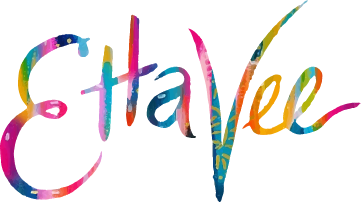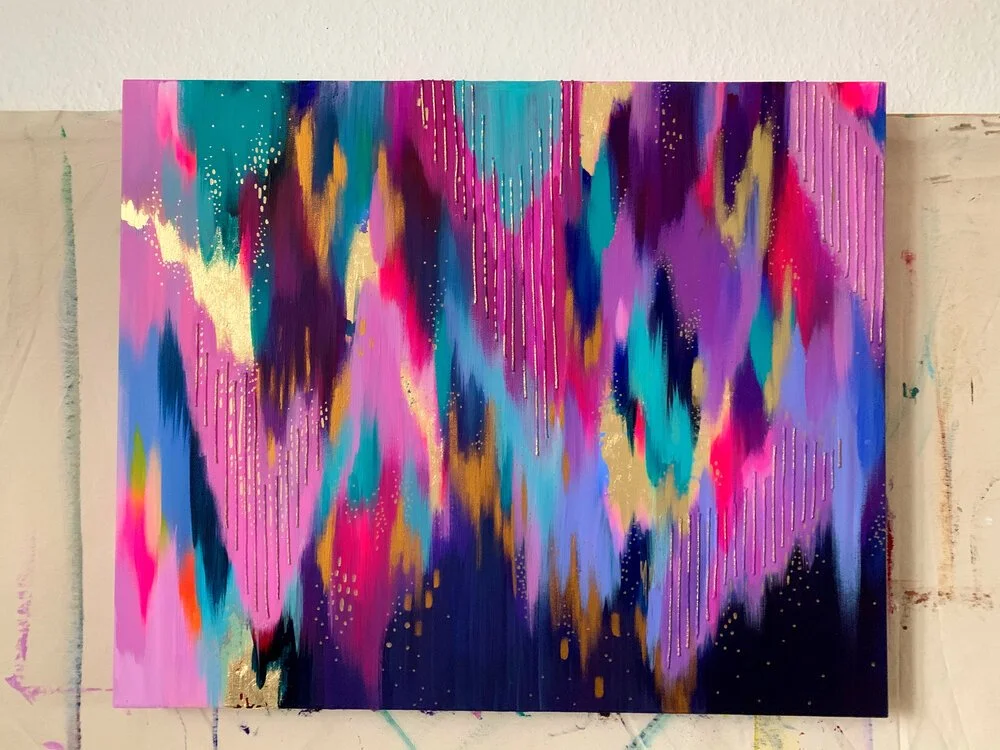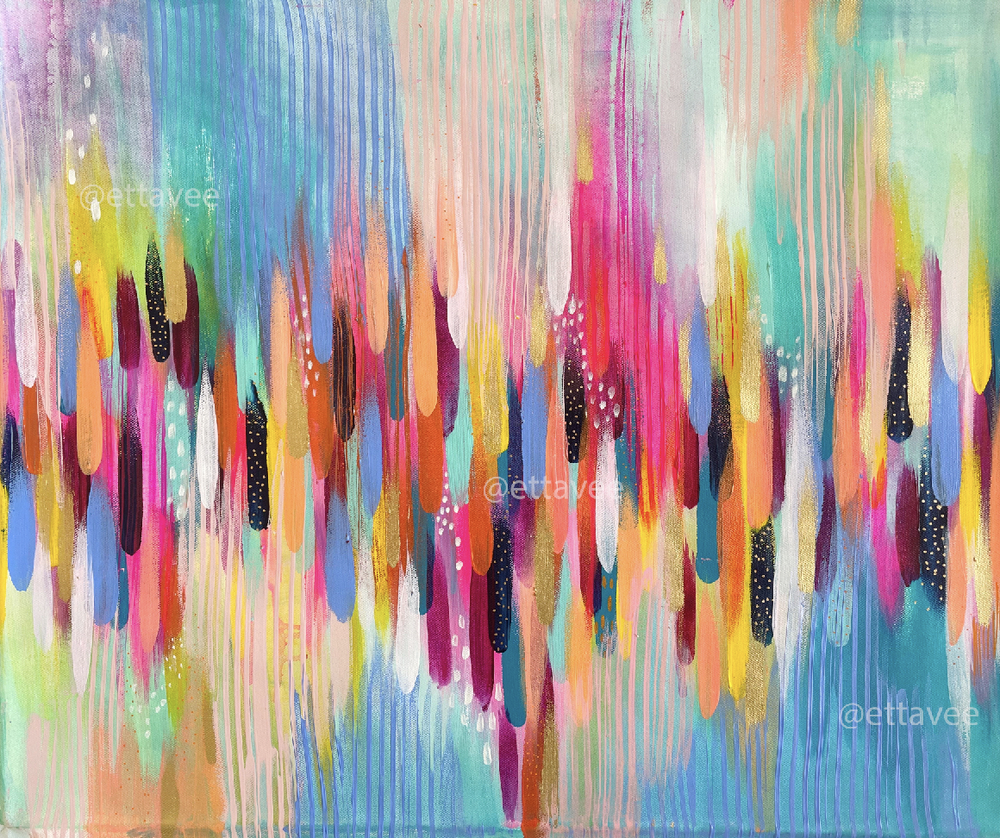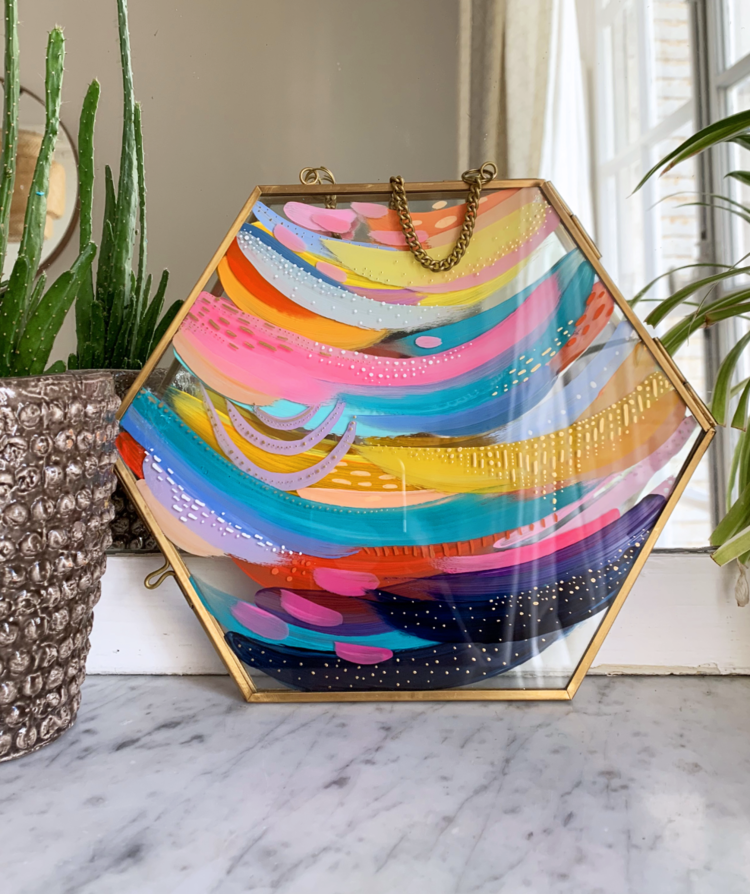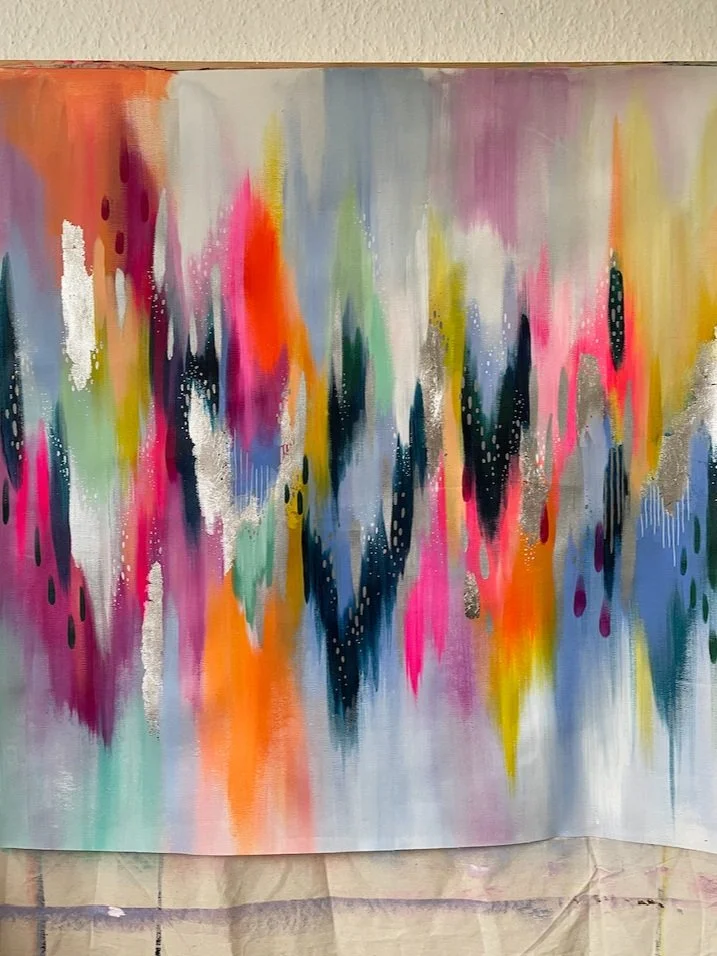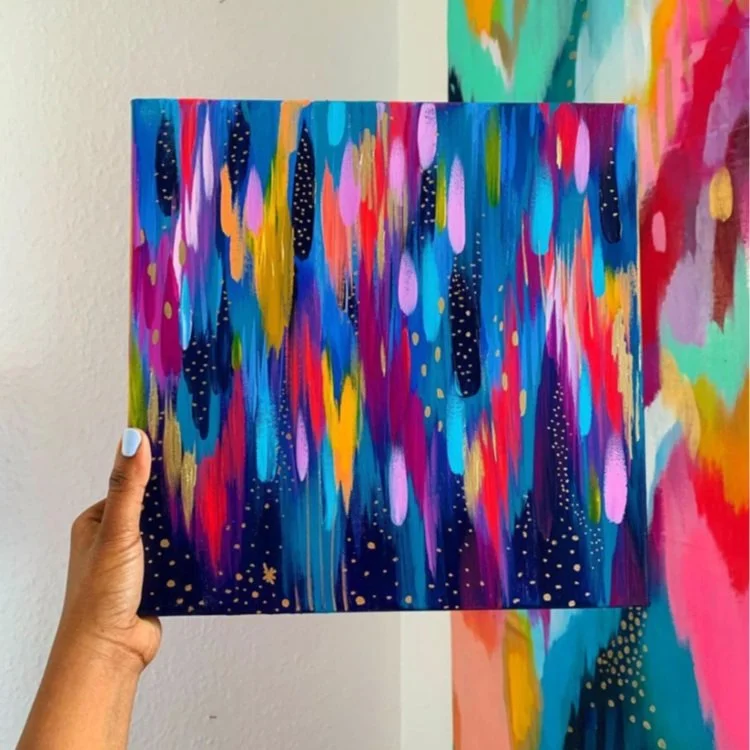Prussian Blue Color Palette Inspiration for Artists
In this post, I’m going to share some of my favorite color combos to use with one of my favorite paint colors - Prussian Blue! This moody, rich color is one of my favorites to use as the darkest value in my colorful abstract paintings. It’s so gorgeous and keeps my colors in the jewel-tone space when I mix it to make darker values.
Today I’ll share two color palette ideas to use with Prussian Blue, as well as two tips for how to use this striking color in your abstract compositions.
Analogous Palette #1 - Prussian Blue & Green
One of my go-to color combinations to use with Prussian Blue is what’s called an analogous color palette. This is just a fancy way of saying “colors that are next to each other on the color wheel.”
Blue and green are next to each other, so I know that this will make a harmonious color palette. Plus, these colors are very calming and can work well for collectors who are looking for soothing statement pieces for their homes.
Analogous Palette #2 - Prussian Blue, Purple, & Magenta
Another analogous color palette that works well with Prussian Blue is to go the other way on the color wheel and use shades of purple and magenta to create a cohesive palette.
This is such a fun way to incorporate Prussian Blue since it also gives the opportunity to bring in some fun colors like hot pink! These pieces tend to have a cosmic, galaxy feel to them and I just adore how this palette looks!
Prussian Blue Tip #1: Use it to Ground Your Compositions
One of my biggest tips for any artist, especially if you paint abstract pieces, is to “ground” your paintings. I paint colorful works with lots of movement, so a key thing that I’m always thinking about is how to guide the viewer’s eye as they’re enjoying the piece.
One of the ways I’ve found to do this is to use darker colors toward the bottom of my paintings. The darker colors naturally draw the eye downward, so as someone is viewing a piece they’ll follow the natural progression of starting at the top, and winding their way down to the bottom.
I also find that it helps to add hits of dark colors to help give my artwork extra contrast and interest. When you add a few dark pops of Prussian Blue, it can really make a piece feel more grounded and elevated.
Here are a few examples of how I’ve used Prussian Blue as an accent in more colorful, complex compositions to help center the painting and guide the viewer’s eye.
Prussian Blue Tip #2: Add Metallic Accents on Top
Last but not least, I’d recommend adding some metallic accents on top of the Prussian Blue sections of your paintings. I do this using gold paint pens, gilding wax, or gold leaf. It pops so beautifully off of the rich, dark Prussian Blue. And if you know me, you know I always love to finish my paintings with gold accents.
Prussian blue sections provide a perfect canvas for these accents that will provide extra contrast and make them pop!
I hope you’ve found this helpful! Are you planning to try adding this gorgeous color to your next painting? Tell me in the comments!
xo, Jessi
Want to learn more about my process for abstract painting including how I paint with Prussian Blue and use it for color mixing? Join me in my class, Joyful Abstracts, where I teach my entire painting process from start to finish! You’ll learn about supplies, abstract composition, color mixing, brushstroke techniques, and so much more!
When you join using this link, you’ll get a free 30 day trial to Skillshare on me!
Pin this post for later! 📌
Hover or tap on this image and click the “Save” button on the top left!
